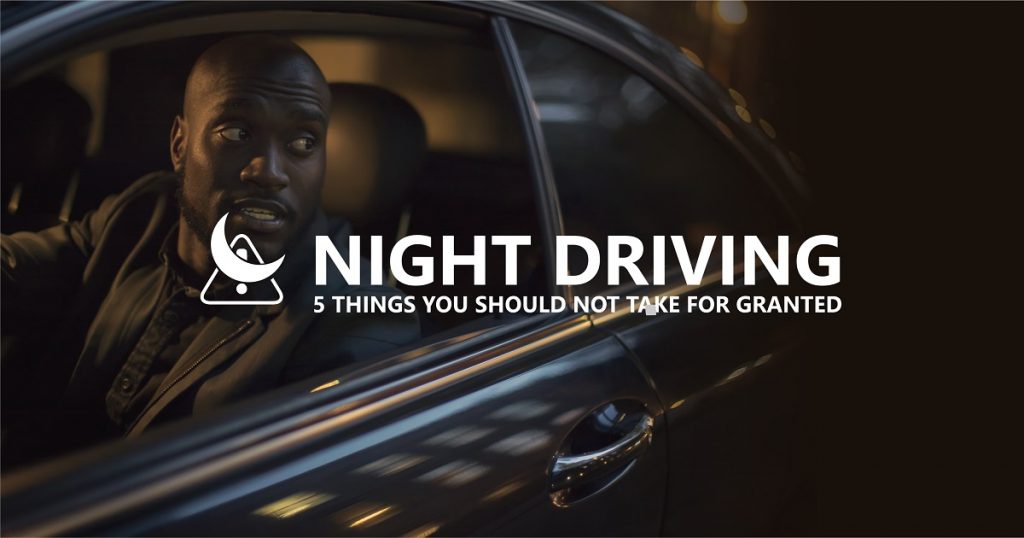Night driving can either be a safe experience or one littered with risks of an accident. It all boils down to how you drive, the distance you’re covering, the safety precautions you take as well as the condition of your car and the road you are plying.
To increase your chances of enjoying a safe driving experience at night, there are certain safety rules you need to adhere to. Let us take a look at some of them.
1. Avoid Drivers Who Drift or Swerve
You must acknowledge the respect the presence of other drivers on the road. However, the fact that there are other drivers on the road does not mean that they make the road safer. On the contrary, there are drivers who increase your risk of having an accident simply by the way they drive.
An example of drivers who make the road more dangerous for you to drive on are drivers who drift or swerve while driving. By swerve, we mean drivers who change lanes or driving direction abruptly. This is dangerous and can lead to an accident. Most drivers doing this end up trying to justify their action with an explanation of how they were in a hurry.
Drifting drivers is also something you should look out for. Drifting occurs when a car breaks traction with its rear wheels while spinning them continuously. This typically happens while negotiating a curve or corner. If you ever run into such drivers, the best thing you can do is to keep your distance.
Another reason you should keep your distance when you encounter drivers who swerve or drift is that there is a likelihood that they might be drunk, intoxicated or in a road rage. Night driving calls for an extra level of caution.
2. Dim or Kill the Lights in the Car
Leaving the light inside your car on while driving at night can hinder your vision. As weird as it might sound, your interior light can get in the way of your ability to see other cars and things outside your car during night driving.
Studies have shown that most drivers prefer to drive with their interior lights off. This is not a mere coincidence. The fact is that interior lights create a distraction and any element that takes your concentration off the road is a potential hazard.
It is not illegal to drive with your interior lights on in Nigeria but it poses a hazard to your safety during night driving.
3. Avoid Glaring into the Light of Oncoming Cars
You should avoid Looking into the bright light from oncoming cars because this can result in temporary blindness. The danger of looking directly into this light is that it takes your eyes time to adjust to the road immediately after looking into the bright light.
To avoid harming your eyes in the short-term and long-term, you should look away from the light as they approach you. One solution to this is to get yourself an anti-glare lens. The truth is that you might not find it easy turning your eyes away from every car that comes your way. The lens protects your eyes from the car’s bright light.
4. Avoid Tailgating
Do you know what it means to tailgate? It is the process driving too closely behind another vehicle. This is a very common practice in Nigeria; especially for drivers with little or no regard for road safety.
While tailgating, you end up driving behind another car at a distance that does not guarantee that your car can stop to avoid a collision if this becomes necessary. Doing this during night driving is actually worse than it sounds and it is something you should avoid.
When driving behind another car, you should drive at least 2 seconds behind the vehicle in front of you. In other words, a safe following distance during night driving or in the daytime is much longer than a car length.
5. Don’t Drive So Fast
Did you know that 37 per cent of night time driving fatalities are caused by speed-related crashes? However, the percentage drops to 21 per cent for the same kind of fatalities that occur during the daytime.
Visibility is much lower during night driving and this is not something you want to take for granted.
Final Thoughts on Night Driving
Your reaction time to shock when driving at night is much lower than it is during daytime driving. This is a fact. Let us put this into perspective – The headlight of your car typically shines 160 feet in front of you but did you know that when driving at 40 mph, you need 190 feet to be able to stop the car. Therefore, you need to be cautious of your speed, pay attention to your visibility and keep your eyes on the road. Do you enjoy driving at night?
